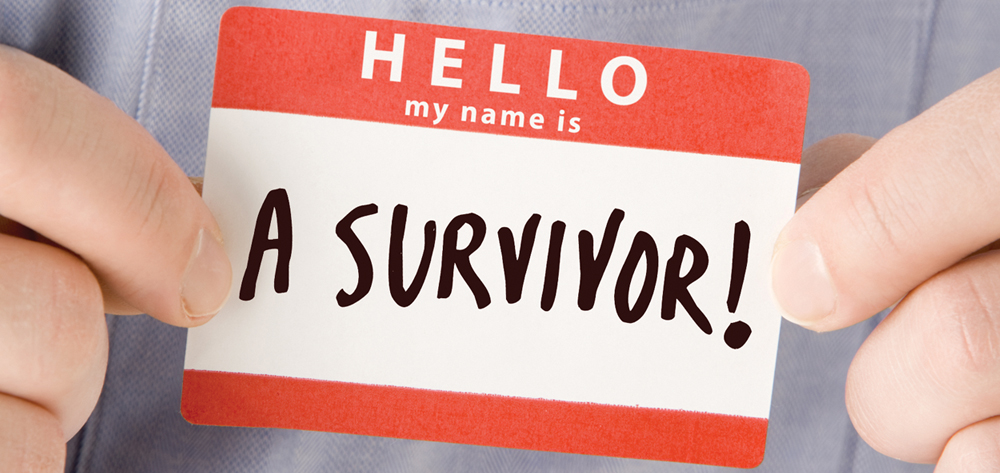In April of 2007, OncoLink launched the OncoLife Survivorship Care Plan, a tool to create care plans for people who have survived cancer. As that tool reaches the milestone of 100,000 care plans created, OncoLink’s Managing Editor, Carolyn Vachani, explains what a survivorship care plan really is – and is not.

In 2006, The Institute of Medicine (IOM) put out a report called From Cancer Patient to Cancer Survivor: Lost in Transition. This report was the first to really shine a light on what life after a cancer diagnosis and treatment looks like and the many ways the healthcare system was failing these survivors. One piece of the report that got a lot of attention was the recommendation that all survivors receive 2 things at the completion of treatment: a treatment summary and a survivorship care plan (SCP). Over the years, the distinction between these has become blurred. But make no bones about it, these are 2 distinctly different documents that are important in their own way.
What is a treatment summary?
The main goal of a treatment summary is for you to have a record of the cancer treatments you have had. It should include:
- Any surgery for the cancer.
- Radiation therapy (with location and dose).
- Any medical therapies such as chemotherapy (including doses), immune therapy, and hormone therapy.
- Any other cancer treatments such as interventional radiology treatment.
- Pathology information and molecular testing results.
- Ideally, the summary will also include any concerns you had during treatment such as reactions, toxicities, or treatment delays.
I think of this document as “provider-facing” – meaning it is most important to healthcare providers—all of them, not just those in cancer care. This includes giving a copy of this summary to your primary care provider. Don’t get me wrong, you should have this document in your files to be able to provide it to any future healthcare providers or reference it if questions arise. But you likely want to know more, and this is where the SCP comes in to play.
What is a survivorship care plan?
The IOM had lofty goals for the SCP – and rightfully so! They wanted this document to be your guide as you move from frequent oncology appointments to survivorship and self-advocacy in your healthcare. The SCP should provide:
- Information about long-term and late effects of all the treatments you got.
- Plans for follow up care.
- Appropriate screening for other cancers.
- Symptoms to report to your provider.
- Healthy living tips.
- Resources for practical concerns like fertility, insurance, employment and coping with life after cancer.
The SCP is the “patient-facing” document of this pair. Including all of this information gives you a resource guide – something you might refer to over the years to get some guidance on a current concern. Oncology providers already know this information – but our patients and their caregivers do not. That is what makes a thorough SCP so important. We cannot expect our cancer graduates to advocate for their own healthcare without this information.
In many cases, a survivor’s primary care provider does not know this information either. Who is at risk for cardiac (heart) issues, hypothyroidism or bone health concerns due to cancer treatment is not top of mind for a PCP. But an educated patient can bring that information to them. This is why OncoLife also provides a “Healthcare Provider Summary” version of the SCP – it is meant to be given to your non-oncology providers as a reference for future needs.
I hope this treatment summary and SCP 101 gives you some insight into the importance of SCPs in helping survivors manage the transition to life after cancer. I also hope it gives you the nudge to get one. If you haven’t received an SCP from your provider, ask them for one. If they cannot provide you one, you can create one on OncoLink. A treatment summary is helpful, but information, education, and tips to manage challenges you may experience after treatment are essential for your health and well-being.
Carolyn Vachani is an oncology advanced practice nurse and the Managing Editor at OncoLink. She has worked in many areas of oncology including BMT, clinical research, radiation therapy, and staff development. She serves as the project leader in the development and maintenance of the OncoLife Survivorship Care Plan and has a strong interest in oncology survivorship care. She enjoys discussing just about any cancer topic, as well as gardening, cooking and, of course, her sons.
Where can I get help for these plans. My md’s don’t seem to know about this. My high distress since my diagnosis in the middle of Covid is lack of info and best practices, lack of timely treatment….mostly via zoom which is inadequate and having a significant personal loss right during diagnosis leading to a now untreated grief reaction. A perfect storm exacerbating my recovery. Thank you
You can always access our care plan via https://oncolife.oncolink.org There is an option to complete a patient version which will then produce your personalized care plan.
In regards to support during COVID, 1) ask your provider if there is a social worker available for you to talk to within the practice. Oncology social workers can provide support, education and resources. 2) if there is no social worker, I encourage you to contact Cancer Care (www.cancercare.org) or the Cancer Support Community Helpline (888.793.9355) where trained social workers can assist you. We feel you and know this must be so difficult to navigate. But there is help available!